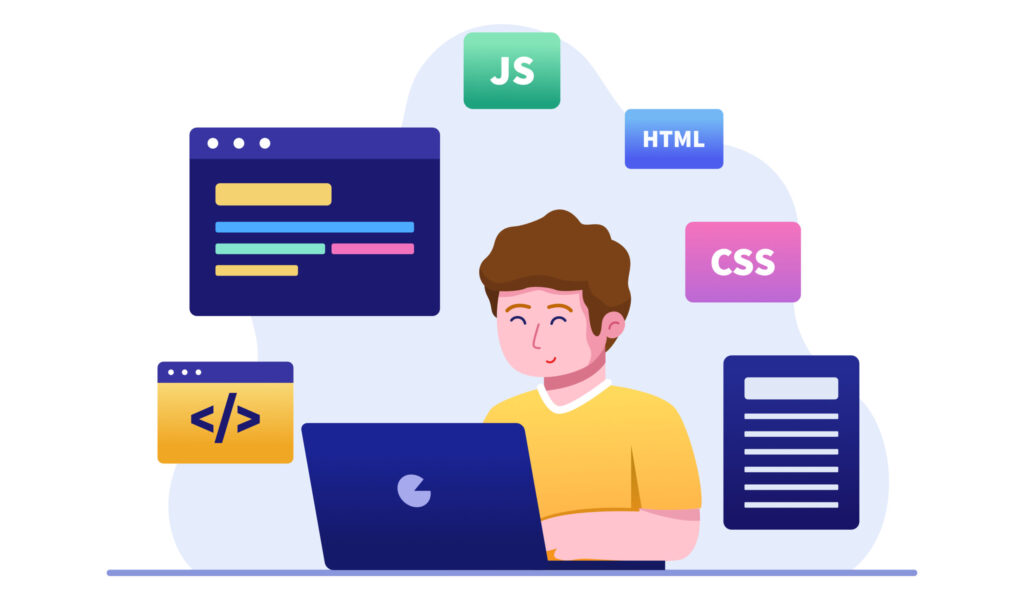Computer programming education through serious games
Resources
Is there a better way to teach computer programming than through online serious games? Probably not. Serious games, or applied games, are games with a serious purpose at the core of their design, instead of pure entertainment.
Through interactive game play and immersive simulations, learning outcomes can be embedded in the structure of a game. In the same way people get addicted to video games, constantly repeating challenging scenarios to ultimately complete their task by mastering the necessary skills or developing the appropriate strategies, learners can be drawn into serious online games for addictive and effective learning experiences. Whether it’s knowledge-based, skills-based, or concerned with experimenting with concepts, modern online serious games, and programmes of serious game training, offer a highly versatile and effective learning tool. A learning tool that can offer a highly appropriate solution to teaching computer science.
Does gaming help you learn programming?
It certainly can. Computer programming, predictably enough, involves a lot of work on computers and modern digital devices, so it only follows that serious online games, by their digital nature, can be tailored to offer productive learning experiences for programmers.
When you consider that the vast majority of learners studying computer programming and computer science today will have grown up playing video games, it follows that they will respond positively to video games adapted to learning outcomes as a method of teaching. Quite possibly more so than by books, paper, and lectures.
You must also consider that computer programming isn’t the dry and overly technical field it’s often represented as. Computer programming involves coding, but then evaluating code, identifying bugs, and fixing them, without messing up existing programme functionality. There is therefore actually a lot of opportunity within computer programming for problem solving, and even creativity and lateral thinking, which are skills that are easy to incorporate into serious games. Solving problems and creative thinking to overcome challenges are stimuli that the human brain needs to stay sharp. Games that play on this make for addictive challenges.
How to make a serious game for computing

So where do you begin? The first step would be to consider your audience. Are these university students studying a module of their degree that relates to programming? Adult learners looking to improve their skill set? Or even younger students who haven’t yet learned the basics, but could be interested in a future in computer science? Identifying your audience is key to knowing the type of serious game you’re going to make. Once you know the end user, you can select the most appropriate elements of their curriculum or syllabus to be turned into games, and adjust the difficulty level accordingly.
The next element to consider is the actual learning outcome. What is your serious purpose? In the case of absolute beginners or prospective students, maybe you’re looking to deliver a fun overview of programming. With more advanced students, you’re either looking for ways to help them understand more complex programming elements, or it might be to allow them to develop specific programming skills in an easy to evaluate, low-stress environment.
A customised learning pathway
A format that offers highly repeatable utility for almost any subject would be the Dynamic Path™. This gives you access to all the game engines on the Drimify platform to create sequential modules, either looking at different aspects of programming, or advancing in difficulty levels or details along a more niche aspect. For example, you could tailor your application to create a series of customised Quizzes that pose bugs or specific problems in coding, and ask questions with multiple choice answers to help your students develop the strategies and thought processes to debug common issues. The sequential modules could even build on initial problems. They might debug one problem on one level, but discover on the next level that this has created another issue for them to solve.
The Dynamic Path™ format could just as easily be customised to cater to a more introductory computer programming course. If it was targeting school children, it might be appropriate to include mini games that are themed by programming language, so you can tap into the enjoyment of more playful games while still encouraging knowledge acquisition. This would also inject some variety and ensure that you’re not overwhelming a beginner with too much detail or asking too much of them mentally, and as such undermining the game’s purpose. If it was targeting adult learners, or even employees as part of an upskilling exercise, a similar effect could be achieved by adding more video content focusing on the theoretical side of programming.
A versatile learning tool that integrates seamlessly
However you choose to put together your serious game for teaching computer programming, you’re accessing a powerful, innovative learning tool that your students will be able to engage with on any modern device – be that a computer or a mobile device like a tablet, or smartphone.
A serious educational game speaks to your programming students on their terms, and teaches them in their native medium. Through the Drimify platform, your games can give you data collection and results quickly and easily through the dashboard, so you can not only assess student performance, but also engagement with your game, meaning that over the long term, it’s constantly analysing its own performance and giving you the information you need to improve it.
Want to know more?





